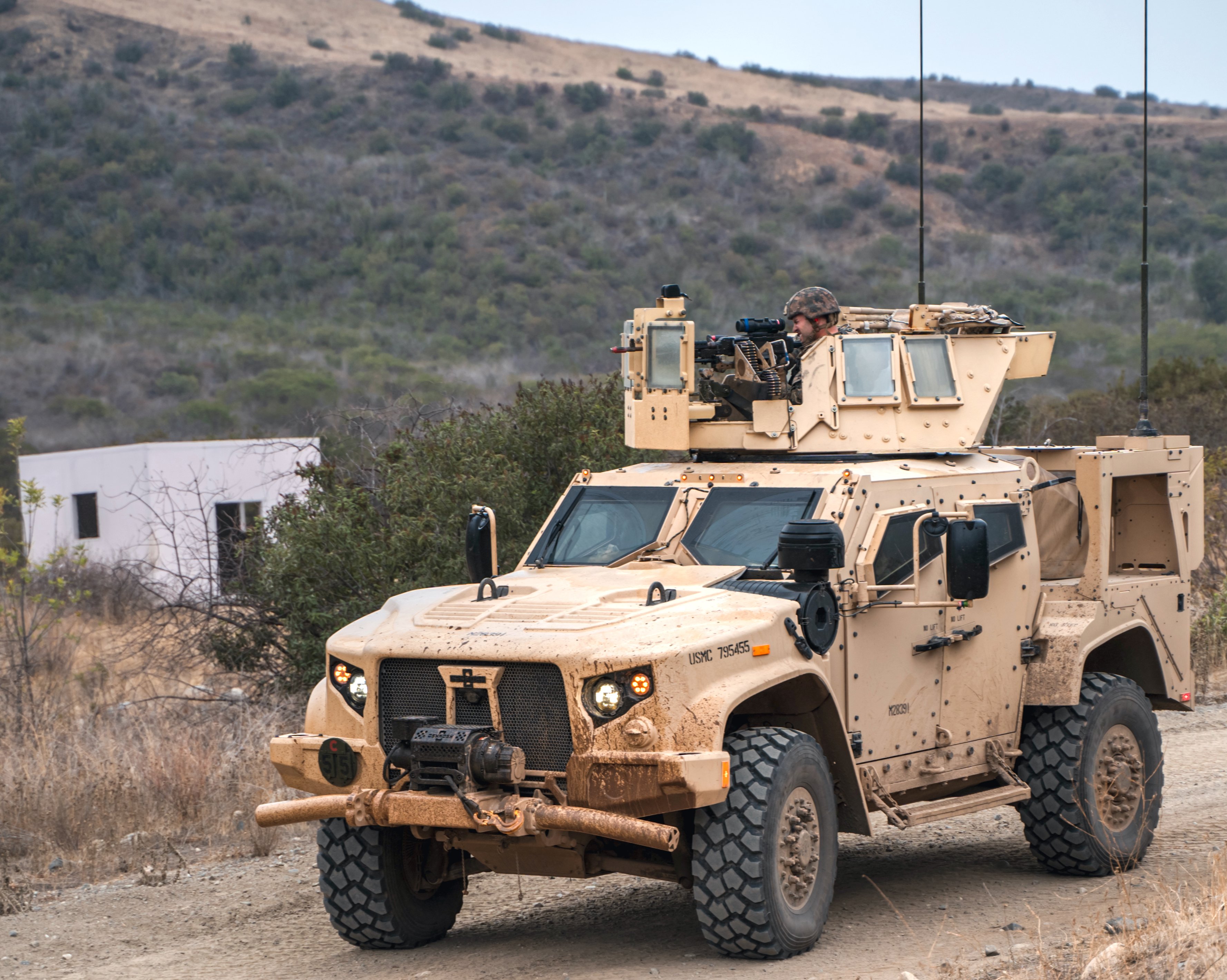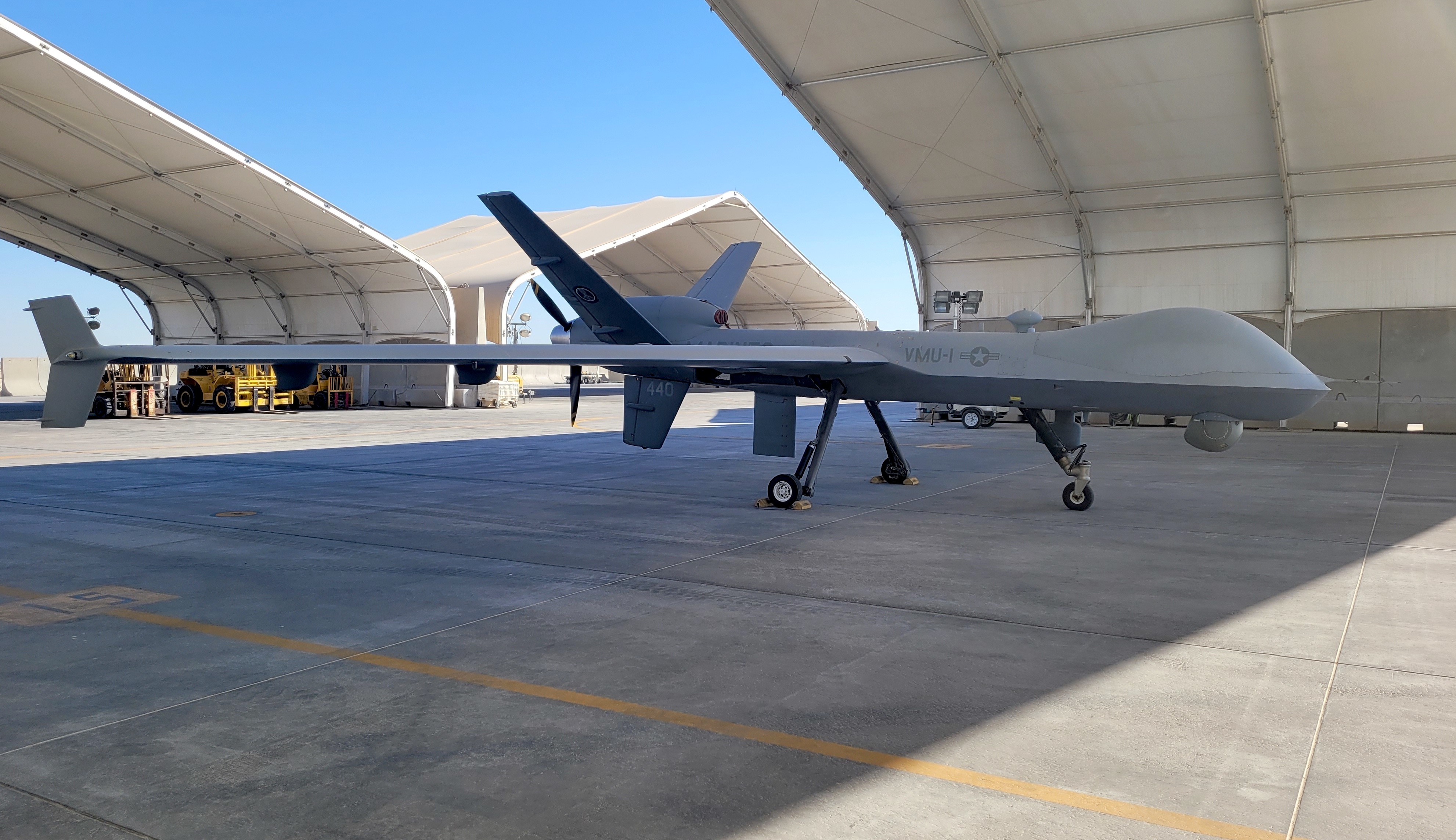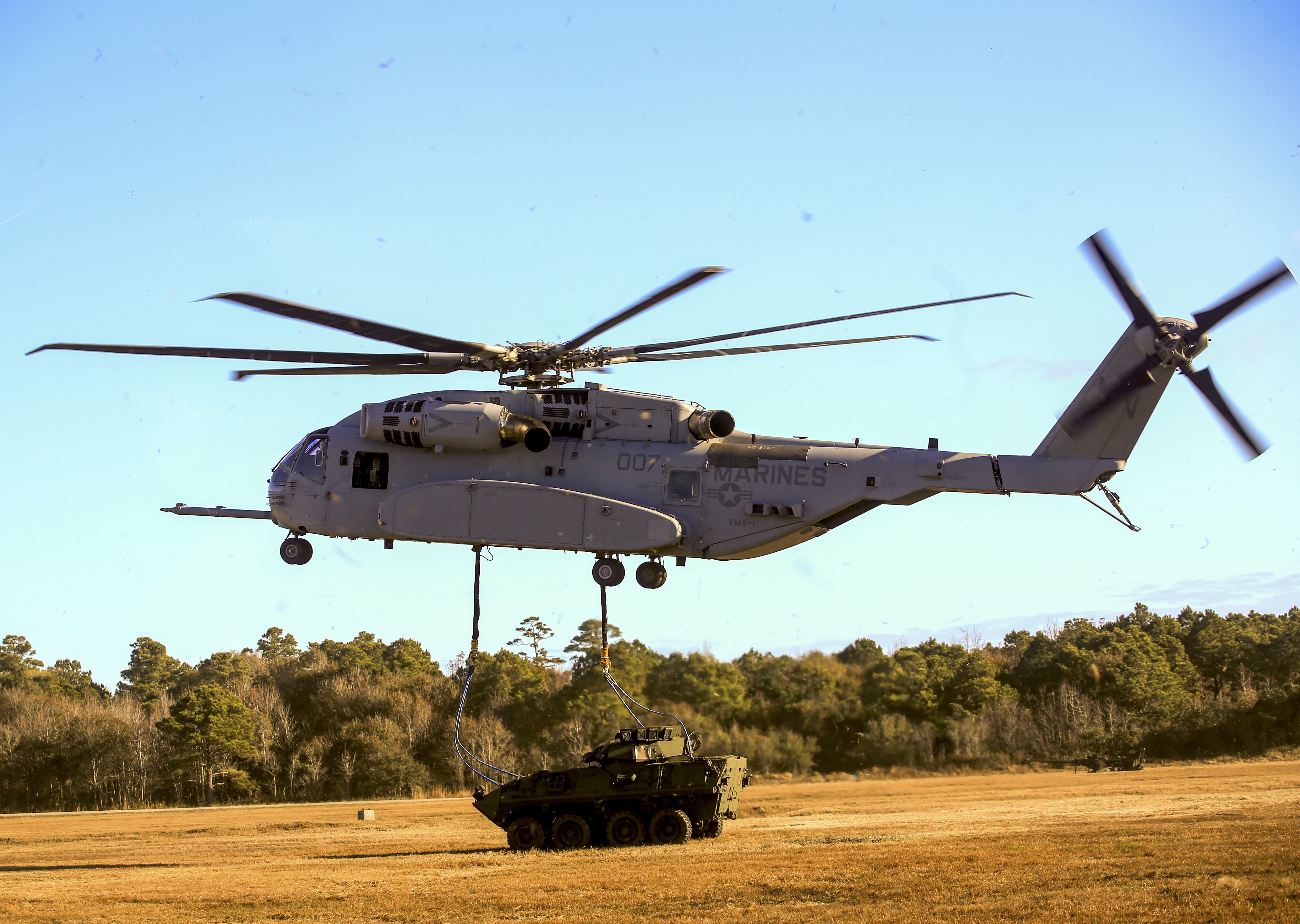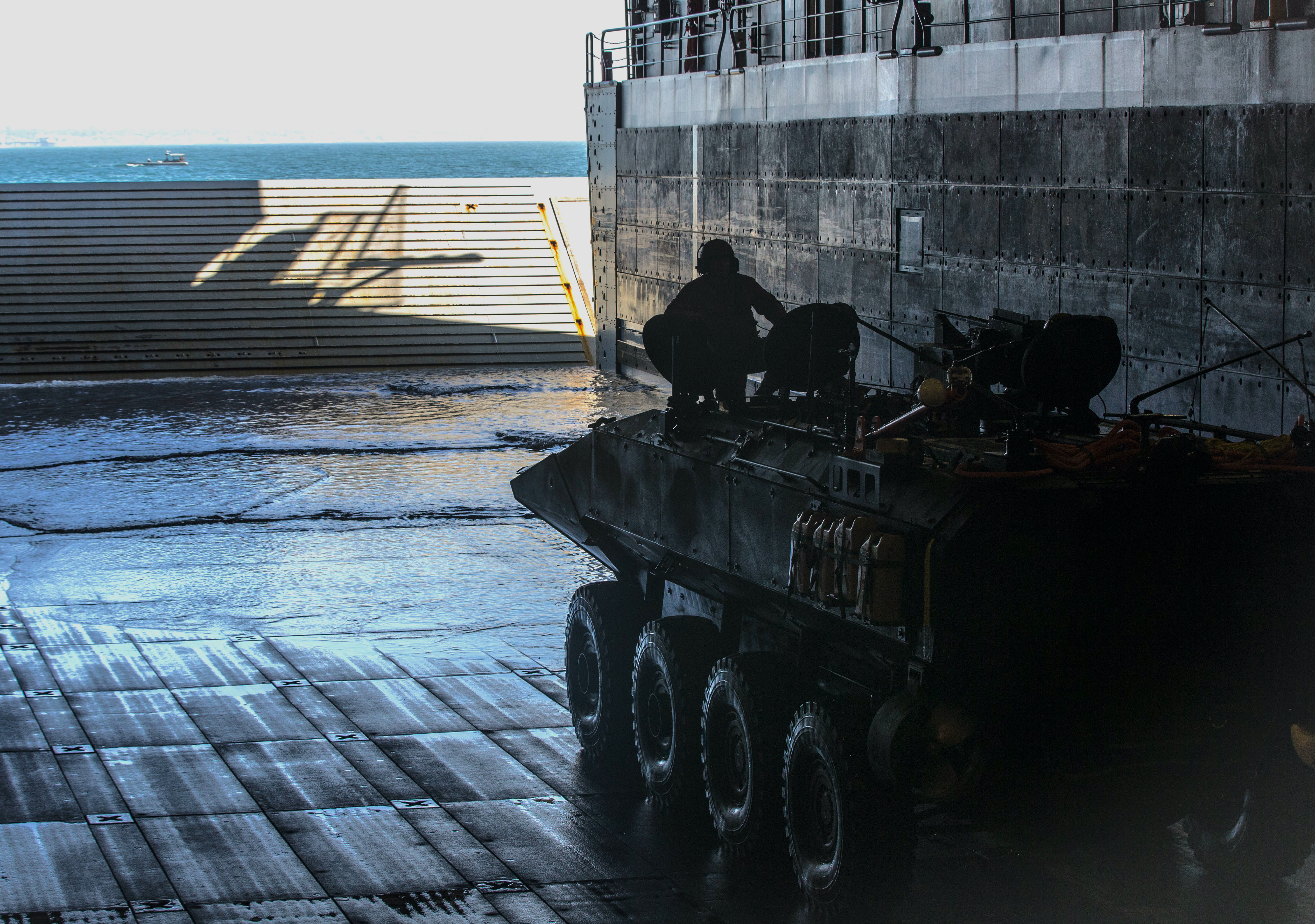
This post is part of a series looking back at the top naval stories from 2021.
The Marine Corps this year continued its journey to meet Marine Corps commandant Gen. David Berger’s strategic vision for the force by pursuing systems to enable the service’s Force Design 2030 goals.
With a focus on operating in the vast region of the Indo-Pacific, the Marines have made capabilities like anti-ship missiles a top priority for the island-hopping campaign that would prove out the Corps’ Expeditionary Advanced Base Operations (EABO) concept.
The service also continued to make progress on ground and aerial systems crucial to the Marine Corps’ modernization efforts.
Naval Strike Missile

Central to the Marine Corps’ strategy is acquiring ground-based anti-ship missiles, which the service envisions Marines firing from ad hoc bases on island and archipelagos throughout the Pacific. The missiles will be a key capability for the Marine Littoral Regiment, a unit construct the Marine Corps is experimenting within the Pacific.
The Marine Corps asked for 29 Naval Strike Missiles in the Fiscal Year 2022 budget request and 35 additional NSMs appeared at the top of the service’s annual unfunded priorities list.
The Marines plan to field the missiles on a modified Joint Light Tactical Vehicle and have already tested out this concept, known as the Navy-Marine Corps Expeditionary Ship Interdiction System (NMESIS). Earlier this year, the Marine Corps announced it performed a test in late 2020 with Raytheon using a Remotely Operated Ground Unit for Expeditionary (ROGUE) Fires truck to launch a Naval Strike Missile.
The Navy and Marine Corps also tested the NMESIS system this summer during the Large Scale Exercise 2021.
MUX

The Marine Corps previously delayed its plans to buy a large ship-based drone, known as the Marine Air-Ground Task Force (MAGTF) Unmanned Aerial System (UAS) Expeditionary program, or MUX, after the numerous requirements made it difficult to pursue one airframe at an appropriate cost.
The service has instead opted to pursue a family of systems approach for MUX and has used the MQ-9A Reaper drones to begin meeting some missions as it works out the approach and requirements for other components of MUX.
“The Marine Corps is currently pursuing MQ-9 as the first UAS to fulfill the MUX Family of Systems (FoS) that will provide the capability necessary to modernize the aviation combat element,” Maj. Jay Hernandez told USNI News in November.
“Marine Unmanned Aerial Vehicle Squadron 1 (VMU-1) will begin MQ-9 experimentation in 2023; the squadron will help develop operational support and tactics, techniques, and procedures, as well as leveraging payloads with high technology readiness levels that will accomplish the Tier 1 capability set,” Hernandez added.
After leasing two MQ-9As from General Atomics for several years, the Marine Corps formally purchased the two aircraft this year. The first MQ-9A went to Marine Unmanned Aerial Vehicle Squadron 1 (VMU-1) with the 3rd Marine Aircraft Wing, which will experiment with the Reapers in 2023.
“The squadron will help develop operational support and tactics, techniques, and procedures, as well as leveraging payloads with high technology readiness levels that will accomplish the Tier 1 capability set,” Hernandez said.
CH-53K

Fleet Marines with one of the Marine Corps’ testing squadrons started flying the CH-53K King Stallion for the first time in January, as the service prepared for the summer initial operational test and evaluation phase of the new heavy-lift helicopter program.
In September, Marines flying two CH-53Ks retrieved one of the Navy’s MH-60S helicopters in a California testing event for the IOT&E stage.
“This accomplishment highlighted the Marine Corps’ efforts to retain a next-generation heavy lift capability in support of the service’s future operating concept. Marine Corps aviation looks to the CH-53K as a much needed replacement for its current heavy lift helicopters,” the Marine Corps said in an October news release.
The Navy in its FY 2022 budget request asked for 9 CH-53Ks, which come out of the Navy’s aviation procurement account. The program is still in the low-rate initial production phase, with the Navy in June issuing Lockheed Martin-owned Sikorsky a $736 million contract modification for 9 helicopters in Lot 5 of the LRIP stage.
The Navy plans to purchase full-rate production aircraft in FY 2023. The first deployment for the CH-53Ks is slated for 2024, according to FY 2022 budget documents.
The new heavy-lift helicopter will replace the Marine Corps’ CH-53E Super Stallion.
Amphibious Combat Vehicle

The effort to replace the Marine Corps’ 1970s-era Assault Amphibious Vehicles is ongoing, as the Amphibious Combat Vehicle program continued full-rate production after reaching initial operating capability late last year.
The Marine Corps plans to purchase four variants of the ACV – a personnel carrier, a recovery variant, a vehicle with a 30-mm cannon, and a command and control variant.
BAE Systems, which is building the ACV for the Marines, in February announced it had provided the Marine Corps with the first command and control ACV.
BAE started with the personnel variant, which was the type of ACV the Marine Corps tested during the initial operational test and evaluation phase of the program that began in 2020.
Also in February, the Marine Corps issued BAE a $184 million contract modification for 36 full-rate production ACVs after awarded a contract for the first 36 full-rate production vehicles in December.





